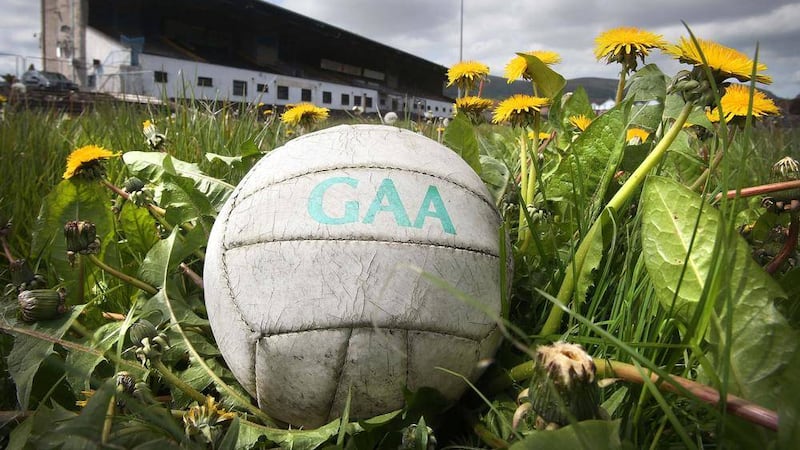ON DECEMBER 15 2014, Mr Justice Horner ruled that the planning permission which had been granted for the GAA’s proposed 38,000 all-seated redevelopment of Casement Park was unlawful.
The court ruling did not sit well with GAA sports writer Paddy Heaney. Writing in The Irish News the following morning (December 16 2014), he proclaimed it would be “a travesty” if the GAA’s plans were to be derailed by the “tiny minority” who had successfully brought the judicial review proceedings that undid the GAA’s planning permission. But why would it be a “travesty”? After all, the GAA’s planning permission was deemed to be unlawful; that was after a 13-day hearing in the High Court.
Furthermore, at that time, the Mooreland and Owenvarragh Residents’ Association (MORA), which brought the judicial review proceedings, had stated they could support a 20-25,000 capacity redevelopment of Casement Park. What’s wrong with that?
According to Heaney, the reason for the “travesty” is that the GAA are insisting Casement Park be redeveloped as a “provincial stadium” with sufficient capacity to host high-profile games such as Ulster Football Championship finals and All-Ireland quarter-finals.
But consider the following. All-Ireland football quarter-finals are played at Croke Park. Between 2004 and 2015, every single one of the 50 matches played, including two replays.
In the five-year period 2010-2014, only four games staged in Ulster were seen by crowds exceeding 30,000; that is, the Ulster Football Championship (UFC) final, currently held in Clones, County Monaghan.
Over that same period, a venue with a 20-25,000 capacity could have accommodated 99 of the 104 Ulster Championship and All-Ireland Qualifier games played at venues across Ulster, both football and hurling. In short, the GAA want Casement Park redeveloped as a provincial stadium specifically for the purpose of being able to host one particular game, the UFC final.
For other UFC matches, the stadium would struggle to half-fill a 38,000 capacity; between 2010-2014, average attendance at UFC semi-finals was less than 17,000 while UFC quarter-final fixtures generated crowds of less than 13,000.
Outside the UFC and the occasional All-Ireland football Qualifier, the stadium would have difficulty attracting crowds anywhere close to 5,000. All adds up to a lot of empty seats.
Events since the planning permission was quashed in December 2014 have only reinforced the case for a suitably-sized redevelopment of Casement Park, which may now be less than 20,000.
In April 2015, the chair of the Safety Technical Group (STG) raised serious concerns regarding safe evacuation from a redeveloped Casement Park. The STG was set up by the Department for Culture, Arts and Leisure (DCAL) to provide advice on its Regional Stadia Programme (Casement, Windsor and Kingspan).
Subsequently, the CAL Assembly Committee launched a public inquiry, which is ongoing, into issues around safe exiting from Casement Park. The DCAL Minister, Carál Ní Chuillín, commissioned a separate Project Assessment Review (PAR).
The PAR reported on August 5, assessing the Casement Park project as ‘amber/red’, defined as: “Successful delivery of the programme is in doubt with major risks or issues apparent in a number of key areas”. In other words, the project is on life-support.
The major issues are around an emergency exiting plan and reapplying for planning permission, which will take at least 12 months.
The PAR report also concludes that an emergency exiting plan will require “capacity reductions”, among other changes. The question now: what is the feasible capacity for a redeveloped Casement Park?
While the PAR report concludes that a “provincial stadium” is achievable, it does not really address the fundamental issue that has led to the many delays in the project: the GAA’s desire to shoehorn a provincial stadium into the highly constrained Casement Park site.
It is the constraints of the site that have really plagued the project to date. Many residents are GAA supporters themselves and would like to see a suitably-sized redevelopment of the ground.
The GAA are perfectly entitled to aspire to a ‘provincial stadium’. But DCAL wants to hand over £62.5 million of public (our) money to help the GAA realise their aspiration. For a stadium which would only be fully utilised one day a year at most; that represents a huge opportunity cost.
Think what other social and economic needs could be tackled with £62.5 million of public money in this age of austerity.
Now is the time for a serious re-visit of the business case for a provincial stadium at the Casement Park site. Failure to do so would be the real travesty.








